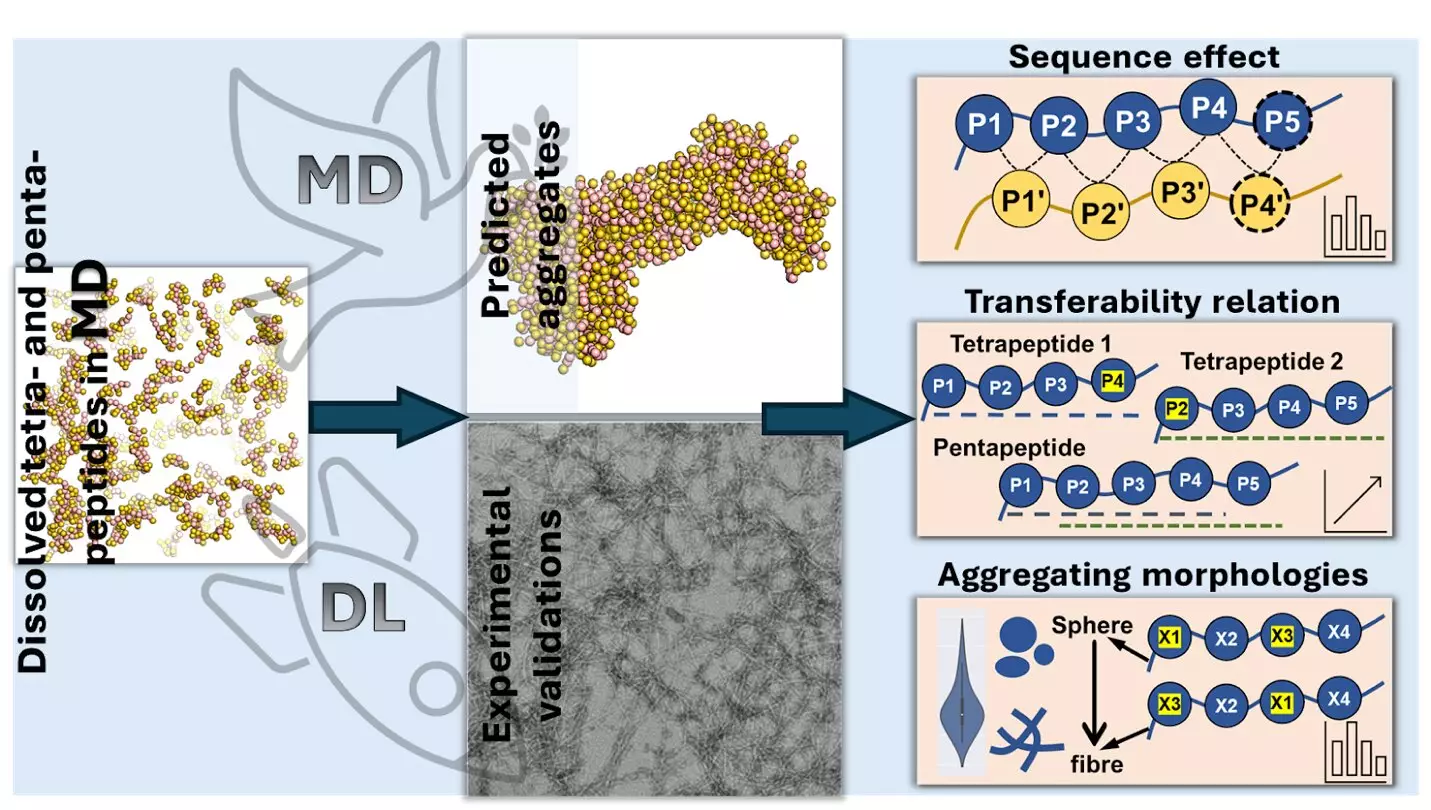Peptides are short chains of amino acids that play crucial roles in the body, from building structures to supporting the immune system. The specific function of a protein is determined by how its amino acids interact with each other and form a three-dimensional structure. In a recent study published in JACS Au, scientists from China delved into the aggregation of short peptide chains to gain a deeper understanding of this process.
Impact on Medicine, Material Science, and Biotechnology
The findings of the study have significant implications for various fields, including medicine, material science, and biotechnology. By using molecular dynamics simulations and advanced AI techniques like Transformer Regression Networks, the research team was able to predict how different peptides of four or five amino acids would aggregate based on their sequences.
Factors Influencing Aggregation
The study revealed that certain amino acids, particularly aromatic ones like tryptophan, phenylalanine, and tyrosine, play a significant role in enhancing aggregation, especially when located at one end of the peptide chain. Aromatic amino acids have ring-shaped structures that attract each other through their electron clouds, facilitating clumping together. In contrast, hydrophilic amino acids like aspartic acid and glutamic acid inhibit aggregation due to their strong interaction with water molecules.
The researchers also found that changing the amino acid sequence can impact aggregation. For instance, adding aromatic amino acids to the end of the peptide chain increases aggregation, while placing negatively charged amino acids at the beginning reduces it. Moreover, peptides clump together into different shapes depending on the types and positions of their amino acids.
This knowledge could have important implications for drug stability, material development, and disease understanding. Understanding how peptides aggregate can aid in creating new materials, designing more stable drugs and drug delivery systems, and comprehending diseases like Alzheimer’s disease, where clumped amyloid-beta peptides form damaging plaques in the brain.
By offering new insights into peptide aggregation, this research is poised to advance biochemistry, materials science, and computational biology. The integration of AI into scientific discovery has enabled scientists to predict and manage how peptides aggregate, ultimately leading to advancements in various fields such as biotechnology, semiconductors, biosensors, and diagnostics.
The study sheds light on the intricate process of peptide aggregation and its implications for drug stability, material development, and disease understanding. The findings provide valuable insights into how peptides interact, fold, and function, paving the way for future advancements in biochemistry, materials science, and computational biology.


Leave a Reply